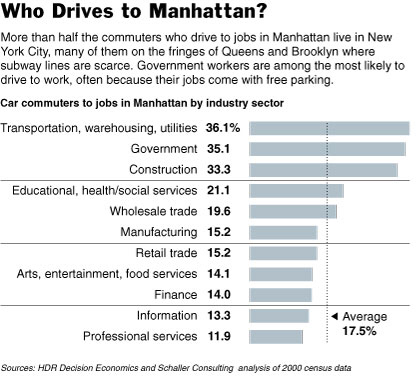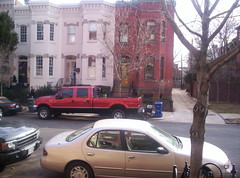Much of the congestion in NYC comes from New Yorkers

In October 2003, I wrote something in themail about the city's "campaign to attract 100,000 new residents," specifically about mobility and transportation:
Second, if we attract 100,000 people that want to drive and park a car everywhere, rather than walking places and/or [using] public transportation or other forms such as bicycling, then we will be destroying the quality of life of our city. In other words, if we attract 70,000 new households with 105,000 or so more vehicles clogging our streets (especially SUVs which take up about 1.5 parking spaces compared to regularly sized cars), owned by people who believe that it is their right and privilege to drive and park their vehicles in the public space — [virtually] for free — we may well ruin the character of our city. Let's not suburbanize Washington, DC!
Enhancing public transportation in all ways should be the foundation of the “City Living” campaign — enhanced bus services (including maps and marketing), the reinsertion of trolleys in major transportation corridors, continued expansion of heavy rail and the creation of “infill” stations, requiring office buildings to develop transportation demand management programs (like Arlington County), support of Metrochek, etc. -- are a piece of the puzzle.
A “transit city” must keep growing its transportation infrastructure and expanding pro-transit policies and development. If we cede the city to the car, then we will give up all that makes the city livable.
(The piece lists 7 other areas that needed to be addressed as well.)
So this puts into context today's report in the New York Times, "In Traffic’s Jam, Who’s Driving May Be Surprising," that finds most of the congestion in parts of NYC are generated by NYC residents.
I do think it's different in DC. After all, 70% of the jobs in the city are held by non-residents and a majority do not take public transit to get to work. If you pay attention to the license plates on major commuter routes in the morning and at night (which I do from time to time) depending on where you are, you see many Maryland or Virginia plates--but true, a not small number of DC plates (often on SUVs!?).


Index Keywords: transportation



0 Comments:
Post a Comment
<< Home